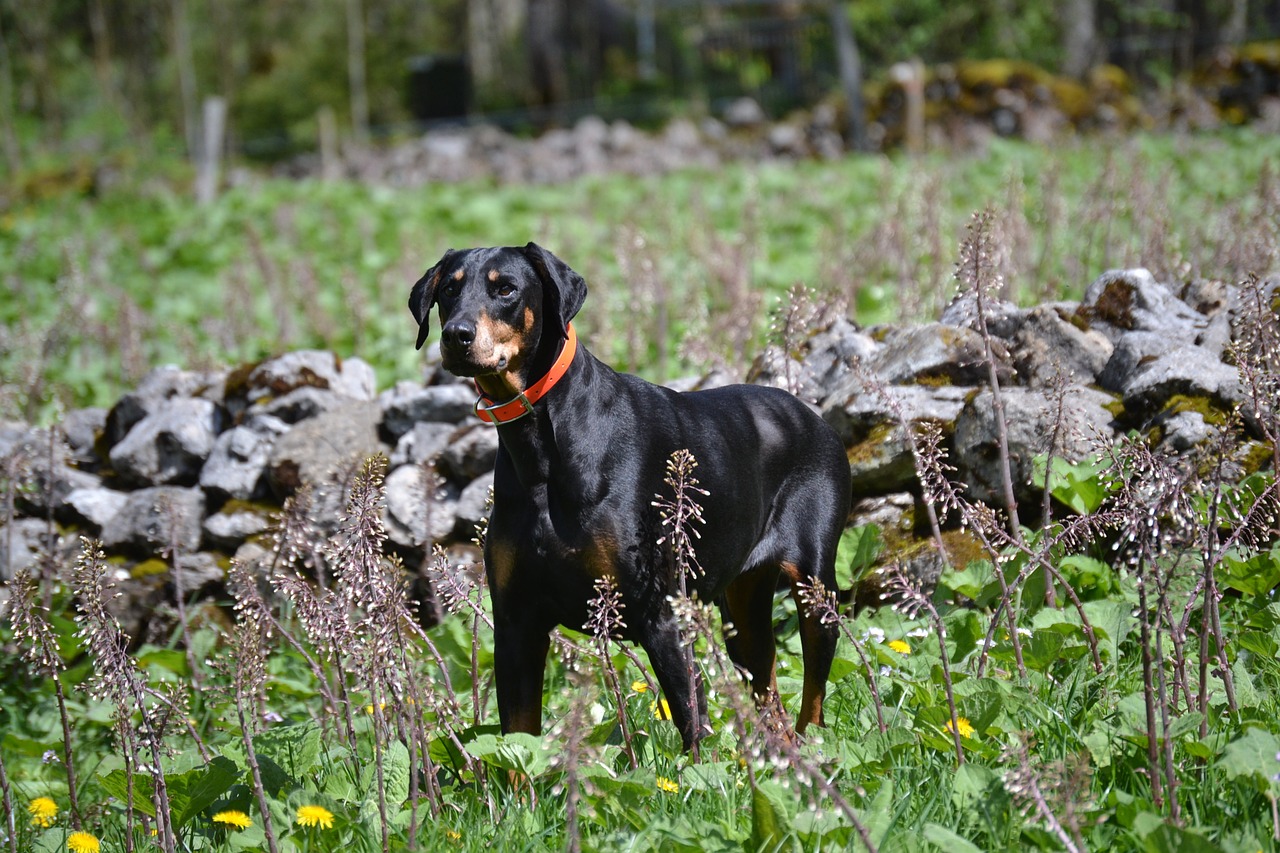Doberman Training – One Impressive and Fierce Loyal Guard Dog
The Doberman Training Notes You Need To Know
The Doberman Pinscher (pronounced “PIN-sher”) is a compactly built, medium-sized, and square-proportioned breed known for its strength and stamina. Their short, thick coat comes in shades of black, blue-gray, black with tan markings, red, fawn, and white.
Aside from being very energetic, this breed is known to be adaptable, highly skilled, and versatile. Doberman dogs are very intelligent and easy to train. It is for these reasons that they are commonly used as guard dogs, although their loyalty and affection make them ideal family dogs as well. Basic training principles apply to doberman training.
Perhaps the most famous member of this breed is “Borong the Warlock”, winner of 230 “Best of Breed”, 30 “Specialty Show Bests”, and many more. Breeders today still use the term “warlock” to refer to Dobermans that are larger than the standard size.
Dobermans Are Not For Everyone
However, this breed is not for everyone. The Doberman requires an owner who is able to show natural authority over the dog. He or she must be confident, firm and consistent, but at the same time loving and nurturing.
Mental stimulation and daily exercise are essential in nurturing a Doberman. If you’re looking to own one or you already have a Doberman of your own, here are a few techniques that will help you in training your Dobe.
Techniques For Successful Doberman Training
As with all other breeds, training should start early. Ideally, you should train between 8 to 16 weeks of age because at this time, Dobermans are not producing any hormones and are more focused on your training.
By around 4 months of age, expect your Doberman to understand simple commands such as “come” or “sit”.
Unlike other guard dogs, Dobermans do better with non-violent, reward-based training methods. Punishing and intimidating them will not help with the training process. This can lead to aggressive and problematic behaviors that will be difficult to correct.
Instead, many Dobe owners have found success with the use of clickers, a reward-based training method relies on “Operant Conditioning”.
The following video shows a Before and After Training of a Doberman
A common problem encountered with Doberman puppies is their constant need to chew on something, which can often be dangerous. One way to stop this behavior is to provide a reward, and simultaneously using the clicker.
For example, once you see your puppy chewing on an object, verbally command him to stop by saying “No” and if he follows, give him a treat while pressing on the clicker. This way, the Dobe will learn to associate the sound of the clicker with good behavior.
Doberman Training Involves Giving Them Work To Do
What sets the Doberman apart from other breeds is their need to have a job. Once your Doberman knows what you want from him, he will move mountains to please you.
This characteristic is what helps them learn fast and makes them easy to train. A good place to start would be house training your Doberman. Since Dobermans are one of the very few breeds created for personal protection, they will do their job only as long as a human is there to please. If left alone to guard a flock, they will most likely wander off in search of their owner.
As a potential Doberman owner, work with end goals in mind. Match your training with your Dobe’s ability and you’ll be more efficient at training. Keep in mind – no matter how strong and agile your Doberman is, he is still a dog who craves your attention. A pat on the head is sure to go a long way.
